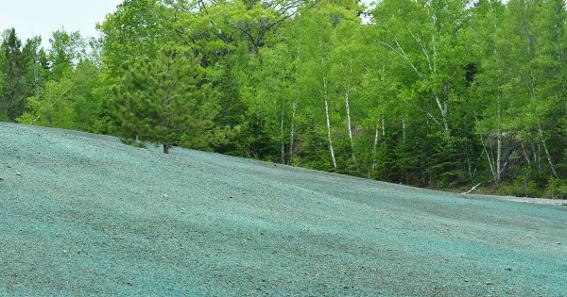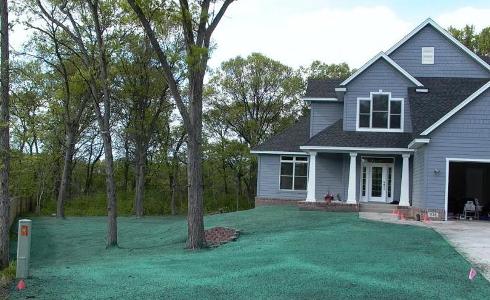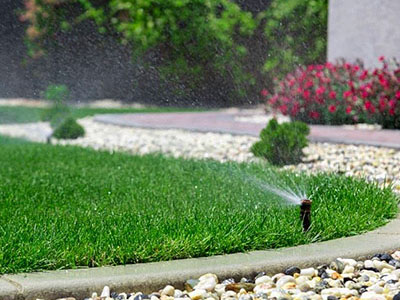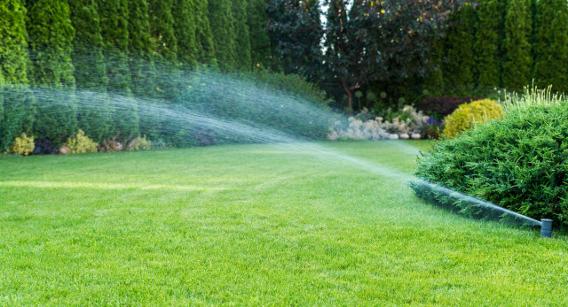Hydroseeding
NOW TAKING bookings for 2021 HYDROSEEDING. CALL 403-556-6353.


WHAT IS HYDROSEEDING?
HydroSeeding which is sometimes also called hydraulic mulch seeding, hydro-mulching, or hydraseeding is a planting process in which a slurry containing seed, hydro seeding mulch, fertilizer and a tackifier (bonding agent) is sprayed onto the ground. The slurry is transported in a truck or trailer mounted tank to the job site and sprayed over prepared ground in a uniform layer. In remote areas hydro seeding is sometimes also done using helicopter. Hydro seeding offers many advantages to the traditional process of broadcasting or sowing dry seed. It promotes quick germination and inhibits soil erosion. It is also a very cost effective alternative to sod and offers a significant cost savings as well as many other benefits.
HOW HYDROSEEDING WORKS
Virtually any grass or erosion control seed that can be planted by seed can be hydro seeded. This includes any sun or shade lawn seed, athletic field mixes, pasture mixes, native grasses, wildflowers, roadside mixes and erosion control mixes. The nutrient rich slurry helps promote fast germination. The hydro seeding mulch helps keep the soil moist to enable the seed to germinate quickly and unlike straw or hay contains no weed seed. The tackifer in the mix acts like a glue to hold the mulch in place and to help prevent washout in the case of heavy rains.
ADVANTAGES OF HYDROSEEDING OVER BROADCAST (DRY) SEEDING
- Quicker Germination
- Better moisture retention
- Better seed to soil contact
- Hydro seeding mulch contains no weed seed unlike straw or hay
- Better results at a similar cost
- Areas such as hillsides and narrow areas that are difficult or impossible to dry seed can be done easily
- No straw or netting to remove
- One step and very uniform application
- Holds soil in place better than dry seeding
ADVANTAGES OF HYDROSEEDING OVER SOD
Sod provides instant gratification but there are advantages to hydro seeding over sod. As someone once commented, hydro seeding is a lot like sod but you eliminate the middle man.
The advantages of hydro seeding over sod are:
- You can have a sod quality lawn in a few weeks for less than 1/3 the cost of sod
- Both hydro seeding and sod require watering but the watering requirements for hydro seeding are less
- Hydro seeding grows the lawn on your soil and is not a different soil that is transplanted
- The problem of sod not “taking” is eliminated
- With sod the roots are cut very short and the sod goes through some shock during shipment and installation
HYDROSEEDING IN PLACE OF EROSION CONTROL BLANKETS
With some of the newer hydro seeding materials that have come on the market it is now possible to save time and money by seeding difficult areas that formerly required labor intensive erosion control blankets.
Products such as BFM (Bonded Fiber Matrix) and FGM (Flexible Growth Media) will provide superior erosion control and fast turf establishment with up to 8 times less labor than erosion control blankets. Unlike blankets these erosion control products bond directly to the soil surface and both hold better and require less surface preparation. On less demanding applications standard hydro seeding materials do an excellent job.


Care and Watering of Your Hydro-Mulched Lawn
Your Hydro-mulching application contains grass seed that requires a continuous supply of moisture. This moisture must come from rainfall or watering. It is not likely that it will rain every day for the next week or two, so be sure to water frequently enough to keep moisture in the soil.
Initial Watering
During the establishment phase, once-a-day watering is usually appropriate during April and May; however, the weather conditions may require more or less water. On very hot summer days, three or more waterings a day may be required. Avoid puddling and washing, but water thoroughly.
The second phase of the watering program begins when the grass is about 1″ tall. Reduce the frequency of watering to once or twice a week. In the very hot summer, three times a week is required. Also reduce or discontinue watering during wet and/or cool periods.
Mowing
A new lawn should be mowed as soon as the grass blades are 2″ to 3″ high. Delaying the first cutting encourages weed growth, and allows long grass blades to bend over, causing a shabby appearance. Mowing plays a vital role in controlling the weeds, giving the grass the opportunity to “choke out the weeds”. Subsequent mowing should be done every week, and the blades of the lawnmower should always be kept sharp. Sharp blades prevent bruised and torn grass blades. Bruised or damaged grass invites grass disease and results in unsightly brown spots.
If the grass gets too tall before it is mowed, raise the mower. Mowing young tall grass too close can kill the grass. A good rule of thumb is to never mow off more than one-third of the grass leaves during any one cutting.
Initial Fertilizing Program
The new grass will need a strong application of balanced fertilizer after the first mowing and again 30 days later. Apply fertilizer on the lawn area when it is dry and then water thoroughly. Use a standard balanced fertilizer available at almost any lawn supply store: Examples include the following:
10-10-10 13-13-13 10-20-10
12-12-12 14-14-14 12-24-12
Apply at rates recommended on the bag. If no recommendation is on the fertilizer bag, usually about 50 lbs on a 5,000 square foot average lawn will be suitable. And, be sure to water thoroughly immediately after applying the fertilizer.
DO NOT USE WEED KILLER ON A NEW LAWN.
© Copyright Blue Sky Contracting